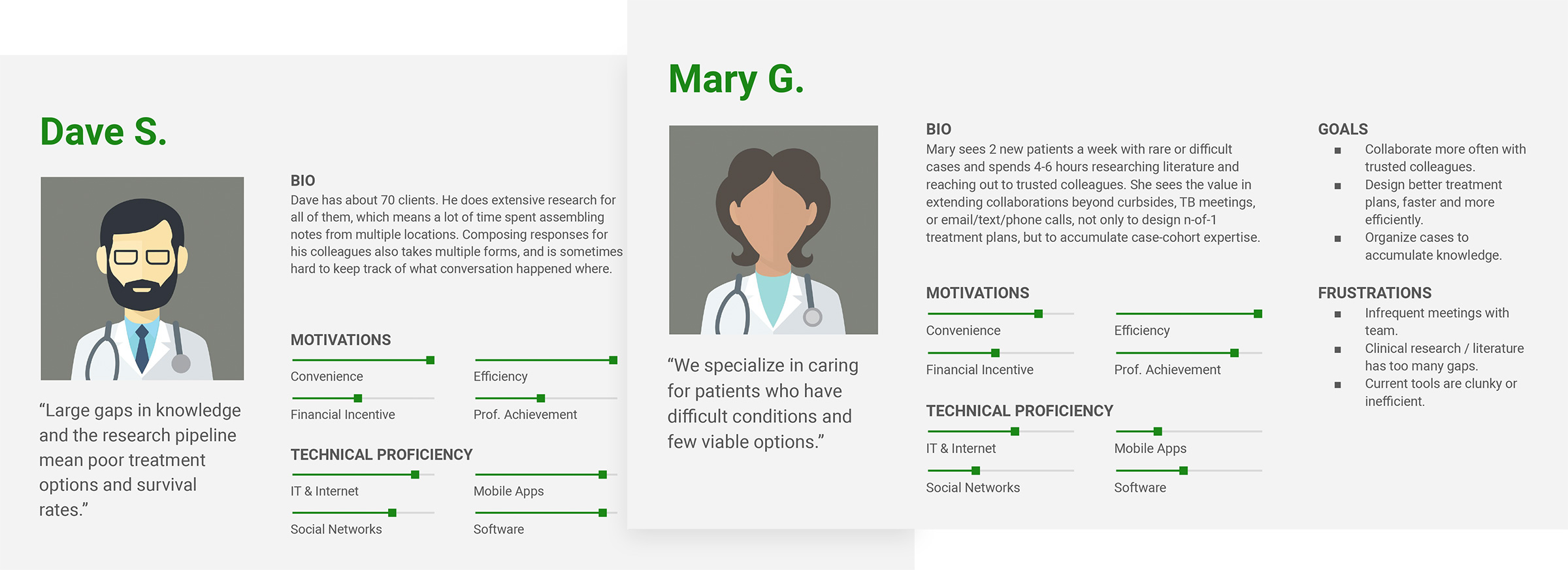2017 – 2021
My own venture into building products for healthcare providers. An enhanced SOAP notes platform that captures the “curbside consults” between doctors – informal conversations that are often not recorded or tracked – to build detailed and searchable case reports of difficult cases.
Product strategy
Brand design
Marketing design
Business development
User research
UI/UX design
User testing
Frontend design
Problem
When doctors discuss cases informally, their conversations are often not captured for future reference. These “curbside consultations” by email, phone, or in the hallway might contain valuable information like a clinical trial that could be relevant for another case. The success (or failure) of the information provided by that consultation could in turn save valuable time, especially for difficult cases like advanced cancer.
Solution
A platform based on the SOAP notes model where doctors can document patient cases alongside informal conversations with colleagues to improve productivity, collaboration, and ultimately patient outcomes. The self-financed MVP was designed for email and phone conversations to determine the practicality of the tool fitting into a doctor’s established routine.
Summary
CeeTOC interviewed several healthcare professionals to identify the best product-market fit. Three opportunities became clear: concierge medicine, medical advocacy, and tumor boards. Our best chance for success seemed to be with oncologists specializing in difficult or rare cancers, because they were already collaborating with colleagues to build treatment plans beyond the standard of care.

Personas based on actual physicians we identifed as the primary market for CeeTOC.


Kicking things off with some paper prototypes and whiteboard brainstorming sessions.


Iterating with lo-fi “design frames” – similar to wireframes but with partially designed UI elements intended for production, like type styles, icons, and grid layout.
With the above “design frames” in hand, we were happy to partner with members from Mark Rennecker’s Medical Advocacy Fellows in the San Francisco Bay Area to continue iterating toward a functional MVP. Their group was already looking for ways to streamline their primarily in-person meetings, and to virtually replicate the benefits of their collaborations. If the private beta was a success, the agreement was to start charging for the service and to launch the SaaS platform publicly.
Results
After several months in beta, it was clear that the tool needed more work. Speech recognition (and probably some AI to go with) was the most requested feature. This was a validation of speech already being a priority in our product roadmap, however we also knew implementing it was going to be difficult with our limited resources. Confident we had a viable product, CeeTOC switched to full-time startup fundraising mode.

An early CeeTOC pitchdeck.
We applied to Stanford’s StartX program, and had multiple conversations with angel investors and early stage venture caps. Unfortunately, StartX did not invite us to join their community, and we were deemed too early stage by every investor we met. The pilot with the Medical Advocacy Fellows subsequently ended, the feature requests were not completed, and understandably the group was not willing to start paying for the service. CeeTOC’s next phase of development stalled and remains in limbo today.







